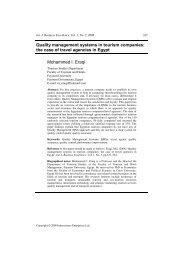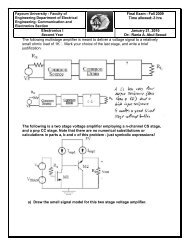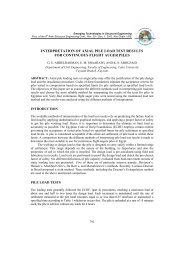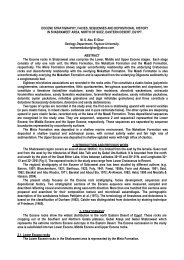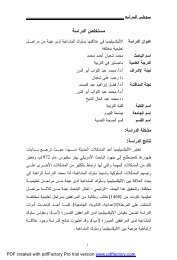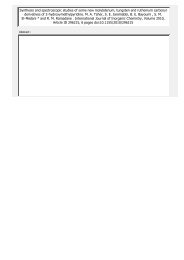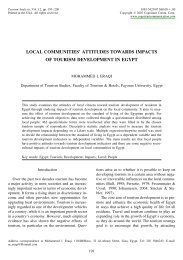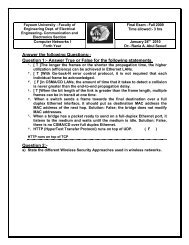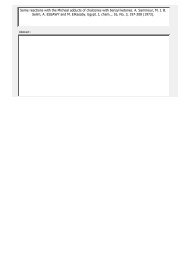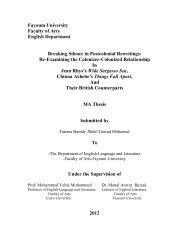INTERPRETATION OF AXIAL PILE LOAD TEST RESULTS FOR ...
INTERPRETATION OF AXIAL PILE LOAD TEST RESULTS FOR ...
INTERPRETATION OF AXIAL PILE LOAD TEST RESULTS FOR ...
You also want an ePaper? Increase the reach of your titles
YUMPU automatically turns print PDFs into web optimized ePapers that Google loves.
De Beer’s method<br />
In this method, the load–settlement values were plotted on a double logarithmic chart. When the<br />
values fall on two approximately straight lines, the intersection of these defines a limit load that is<br />
considered a pile yielding load. The method is illustrated in Figure 6 for pile no. 1, as an example<br />
pile.<br />
Regarding the results a new definition must be introduced for this method namely yielding<br />
limit load. All previously mentioned methods determine a failure load except De Beer. Therefore,<br />
one should distinguish between the failure load and the limit load to adopt the proper factor of<br />
safety. The pile failure load, which predicted from load–settlement relationships of piles loaded to<br />
pre-failure are based on assuming certain shapes of these relationships independent of pile<br />
geometry, soil properties, and rate of loading. But the limit load is the load at which the curve<br />
begins to be steeper sloped and enters into the plastic behavior zone. This method needs the pile to<br />
be loaded near failure, because when the pile is not loaded near failure, the plotted values of the<br />
load settlement fall on approximately one straight line and the limit load is not defined.<br />
Settlement S (mm)<br />
0.1<br />
Figure 6: Yielding limit load for pile no. 1<br />
De Beer’s method is applicable only to 49 pile tests in this study. From the results it is found<br />
that no comparison can be done because the large difference of factor of safety in this method<br />
compared with all other methods, this is because it predicts the yield limit load but others predict<br />
ultimate failure load.<br />
Decourt’s Extrapolation Method<br />
1<br />
10<br />
100<br />
Load Q (mm)<br />
1 10 100 1000<br />
This method is applied by dividing each load by its corresponding movement and plotting the<br />
resulting values against the applied load. Figure 7 shows the result for pile no. 26, as an example<br />
pile. The part of the curve that tends to a straight line intersects the load axis. Linear regression<br />
over the apparent straight-line determines the required slope C1 and y- intercept C2 constants.<br />
Decourt’s ultimate load is the value at the intersection with the load axis, Decourt’s ultimate load<br />
Qu can be accurately calculated as the ratio between the y- intercept and the slope of the line as<br />
given in Eq. 7.<br />
Qu = C2 / C1 (7)<br />
796<br />
Limit load =143



